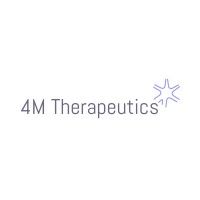预约演示
更新于:2024-12-31
4MT-A
更新于:2024-12-31
概要
基本信息
药物类型 小分子化药 |
别名- |
靶点 |
作用机制 GSK-3β抑制剂(糖原合酶激酶-3β抑制剂) |
在研适应症 |
非在研适应症- |
非在研机构- |
最高研发阶段临床前 |
首次获批日期- |
最高研发阶段(中国)- |
特殊审评- |
关联
100 项与 4MT-A 相关的临床结果
登录后查看更多信息
100 项与 4MT-A 相关的转化医学
登录后查看更多信息
100 项与 4MT-A 相关的专利(医药)
登录后查看更多信息
1
项与 4MT-A 相关的文献(医药)2010-04-01·Analytical and Bioanalytical Chemistry
LC-MS/MS screening method for designer amphetamines, tryptamines, and piperazines in serum
Article
作者: Wolfgang Weinmann ; Sebastian Dresen ; Ariane Wohlfarth
Since the late 1990s and early 2000s, derivatives of well-known designer drugs as well as new psychoactive compounds have been sold on the illicit drug market and have led to intoxications and fatalities. The LC-MS/MS screening method presented covers 31 new designer drugs as well as cathinone, methcathinone, phencyclidine, and ketamine which were included to complete the screening spectrum. All but the last two are modified molecular structures of amphetamine, tryptamine, or piperazine. Among the amphetamine derivatives are cathinone, methcathinone, 3,4-DMA, 2,5-DMA, DOB, DOET, DOM, ethylamphetamine, MDDMA, 4-MTA, PMA, PMMA, 3,4,5-TMA, TMA-6 and members of the 2C group: 2C-B, 2C-D, 2C-H, 2C-I, 2C-P, 2C-T-2, 2C-T-4, and 2C-T-7. AMT, DPT, DiPT, MiPT, DMT, and 5MeO-DMT are contained in the tryptamine group, BZP, MDBP, TFMPP, mCPP, and MeOPP in the piperazine group. Using an Applied Biosystems LC-MS/MS API 365 TurboIonSpray it is possible to identify all 35 substances. After addition of internal standards and mixed-mode solid-phase extraction the analytes are separated using a Synergi Polar RP column and gradient elution with 1 mM ammonium formate and methanol/0.1% formic acid as mobile phases A and B. Data acquisition is performed in MRM mode with positive electro spray ionization. The assay is selective for all tested substances. Limits of detection were determined by analyzing S/N-ratios and are between 1.0 and 5.0 ng/mL. Matrix effects lie between 65% and 118%, extraction efficiencies range from 72% to 90%.
1
项与 4MT-A 相关的新闻(医药)2024-05-13
- GSK3 inhibitors showed successful CNS target engagement and efficacy comparable to lithium at significantly lower doses in models of bipolar disorder
SKILLMAN, N.J.--(BUSINESS WIRE)-- 4M Therapeutics Inc., an early-stage biotechnology company developing treatments for neuropsychiatric and neurodegenerative conditions, today announced the presentation of a poster at the Society of Biological Psychiatry (SOBP) Annual Meeting, that occurred from May 9-11, 2024, in Austin, Texas. The poster, titled “The Effects of Novel Small Molecules in a Preclinical Model of Positive Affective State,” was presented on May 11, 2024.
“Our presentation underscored the capability of our novel small molecules to selectively target GSK3β and demonstrate efficacy for the treatment of bipolar disorder and acute mania,” said Dr. Pablo Lapuerta, Chief Executive Officer and Co-Founder of 4M Therapeutics. “We continue to accelerate the development of much-needed therapeutic options that have the potential to significantly improve upon the safety and efficacy of the standard of care for patients with neuropsychiatric conditions. We remain on track to initiate a Phase 1 clinical trial for our lead investigational compound in 2025.”
The poster examined the effects of 4M Therapeutics’ glycogen synthase kinase 3 beta (GSK3β) inhibitors, 4MT-A and 4MT-B, on amphetamine (AMP)-induced positive appetitive ultrasonic vocalizations (USVs), a validated model of positive affective state. Marked increases in USVs when treated with AMP were attenuated by lithium, and equal or greater reduction in USVs was observed when treated with 4MT-A and 4MT-B at 1/500th to 1/1000th the concentration of lithium. Similar patterns were observed across USV categories and treatment groups in both the first and second hour after AMP dosing. In addition, supporting data showed target engagement for 4MT-A through the reduction of pCRMP2 in vitro in excitatory cortical neurons and in vivo in rat brain. These statistically significant reductions in pCRMP2 demonstrated GSK3β inhibition affecting a key biomarker.
About 4M Therapeutics Inc.
4M Therapeutics Inc. (4MTx) is advancing treatments for neuropsychiatric and neurodegenerative conditions. The Company focuses on targets for a wide array of disorders and indications. 4MTx applies unique insights from its living human brain cell platform, which was developed through a collaboration between Harvard, MIT, and the University of Washington to identify and design more effective and safer therapeutics. The Company’s pipeline includes potential breakthrough treatments for bipolar mania, agitation in Alzheimer’s disease, neurodegeneration, and other CNS disorders. For more information, visit .
临床1期
100 项与 4MT-A 相关的药物交易
登录后查看更多信息
研发状态
10 条进展最快的记录, 后查看更多信息
登录
| 适应症 | 最高研发状态 | 国家/地区 | 公司 | 日期 |
|---|---|---|---|---|
| 双相情感障碍及相关疾病 | 临床前 | 美国 | 2024-05-09 | |
| 躁狂 | 临床前 | 美国 | 2024-05-09 |
登录后查看更多信息
临床结果
临床结果
适应症
分期
评价
查看全部结果
| 研究 | 分期 | 人群特征 | 评价人数 | 分组 | 结果 | 评价 | 发布日期 |
|---|
No Data | |||||||
登录后查看更多信息
转化医学
使用我们的转化医学数据加速您的研究。
登录
或

药物交易
使用我们的药物交易数据加速您的研究。
登录
或

核心专利
使用我们的核心专利数据促进您的研究。
登录
或

临床分析
紧跟全球注册中心的最新临床试验。
登录
或

批准
利用最新的监管批准信息加速您的研究。
登录
或

特殊审评
只需点击几下即可了解关键药物信息。
登录
或

来和芽仔聊天吧
立即开始免费试用!
智慧芽新药情报库是智慧芽专为生命科学人士构建的基于AI的创新药情报平台,助您全方位提升您的研发与决策效率。
立即开始数据试用!
智慧芽新药库数据也通过智慧芽数据服务平台,以API或者数据包形式对外开放,助您更加充分利用智慧芽新药情报信息。
生物序列数据库
生物药研发创新
免费使用
化学结构数据库
小分子化药研发创新
免费使用

